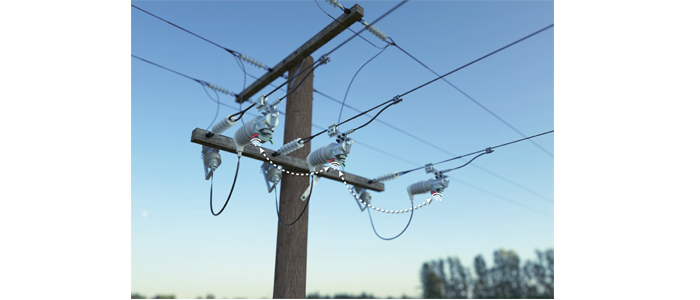- +61 7 3374 2877
- Email Us
Ultra-fast, single-phase lateral reclosers benefit network operators by reducing operational expenditure, improving reliability and mitigating fire ignition risk. Commonly used in network spur feeders, the combination of embedded control, enclosed fault interruption, and advanced power management provides improved safety for personnel working on or around the lines. It is important that design considerations contribute to improved safety wherever possible.
Ultra-fast, single-phase lateral reclosers benefit network operators by reducing operational expenditure, improving reliability and mitigating fire ignition risk. Commonly used in network spur feeders, the combination of embedded control, enclosed fault interruption, and advanced power management provides improved safety for personnel working on or around the lines. It is important that design considerations contribute to improved safety wherever possible.
Lateral reclosers are often installed at remote locations. The means by which the recloser will be powered is a critical design consideration and has a significant impact on safety. The availability of a reliable power supply determines the method of closing, whether the protection is running and what safety enhancements are enabled.

Ensuring operator safety during live line work and vegetation management activities requires the protection to always be running, particularly when a hot line or work tag is applied. To be assured the protection is always running and the hot line or work tag is blocking reclose as required, either a battery backup or sufficient current for self-powering should be always present. A wake up time cannot be tolerated if the protection performance is to remain coordinated with the upstream protection, critical under line maintenance, hot line, or work tag conditions.
With an appropriate battery backup, safety enhancements can be enabled. One example is manual closing. There is no line current to self power if a lateral recloser is open. The safest manual close of the lateral recloser vacuum interrupter requires battery backup power. Delaying a manual close further enhances safety by allowing an operator to initiate the close operation then move into a safe area before the close is completed. Should the recloser close on to a fault, the operator is well clear, the protection is running, and the fault will be interrupted without delay and without arcing of any open type contacts.
Like batteries in substations and feeder reclosers, lateral recloser batteries need to be monitored. It should be simple and safe to easily check battery condition at site prior to applying a hot-line or work tag or applying any other maintenance or safety mode. Communications between individual phases of lateral reclosers further enhance safety by utilising the battery backup. Interphase communications enable multi-phase functionality such as backfeed block tripping, and synchronised tripping and closing of all phases mitigating ferroresonance and single phasing risks. With an appropriate battery backup, low power short-range radios ensure that all phases work together to enhance safety.
Lateral reclosers are for overhead networks and need to be lightweight. To avoid lifting injuries during installation and operation, ensuring they are solidly mounted to a cross arm or supported by the conductors once installed are important safety considerations.